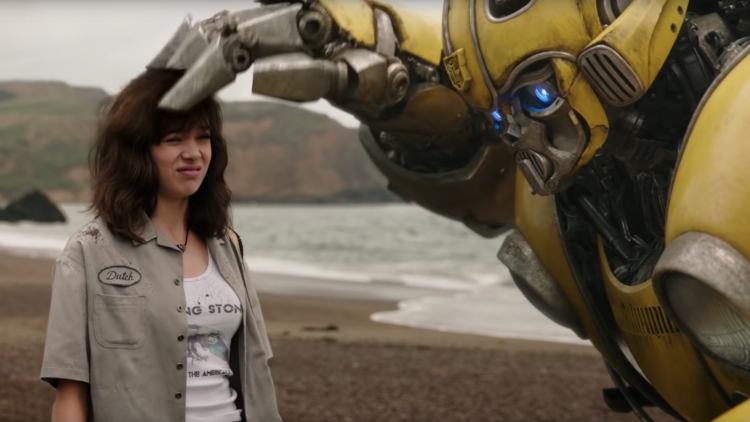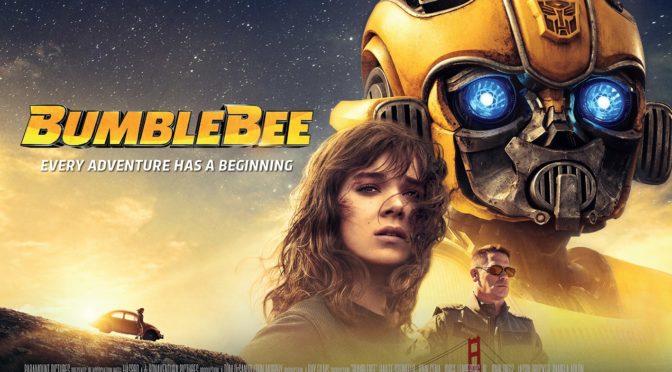Looking to expand the reach of their most popular franchise, Paramount has created a standalone prequel to Transformers. Set in the 80s, Bumblebee is the origin story of how the yellow robot came to Earth and how that led to the presence of other transformers. The film stars Hailee Steinfeld (True Grit) as Charlie, a high school senior who gets an old Beetle only to realize that it is a transformer. The spinoff also has a new creative lead with stop-motion animator Travis Knight (Kubo and the Two Strings) taking the reins from Michael Bay in his first live-action feature.
Despite its connection to the larger Transformers universe, Bumblebee does not make any attempt to imitate Michael Bay’s style. The film is closer to The Iron Giant than anything else. When Bumblebee first meets Charlie he is innocent and scared, with no recollection of where he is or why he came there. The change is a little jarring since the prologue on Cybertron sets him up as a formidable fighter yet on Earth he has a puppy-like demeanor, but this allows a series of cute scenes where Charlie tries to explain how he has to behave, similar to training a new dog. The quest to return him back to his home also recalls E.T. and there is even a scene where he makes the well-known pointing gesture towards Charlie. Bumblebee becomes her only friend and their relationship provides the film’s heart.

The action is much clearer than previous films in the series. Bay has always been known for creating massive, hectic battles with a shaking camera that can be disorienting. Knight prefers a cleaner look to the action. Fights between Decepticons and Autobots and the military are more plainly choreographed which makes the combat more digestible if a little ordinary. Knight adds a few flourishes especially in a chase scene where Bumblebee, in vehicle form, outruns a police officer in a tunnel using his transforming powers. The robots are mostly identical to Bay’s designs but because the majority of the film only features three transformers, each clearly marked by a single primary color, it reduces the issue of not being able to distinguish between robots during battle.
Being set in the 80s means Knight pulls out all of the required references. Charlie starts her morning by eating a bowl of Mr. T branded cereal, listens to a Walkman, and has an extensive tape collection. Unfortunately the movie does fall into some 80s high school clichés when it comes to bullies. Charlie is not in the popular crowd and the way a group of girls comes by just to make a mean joke about her deceased father stretches belief and is a cheap shortcut to sympathy. The musical references end up being the best part of the setting. Bumblebee’s reactions to different tunes and his timely playback of songs as a means of communicating are always entertaining. The chosen tracklist is mostly filled with the expected 80s artists like Steve Winwood and Rick Astley, but while the song choice doesn’t necessarily innovate, its earnest use prevents the music from feeling trite. The film doesn’t have high ambitions, but Bumblebee is a warm, pleasing story of friendship between two outsiders.

3/5 stars.
